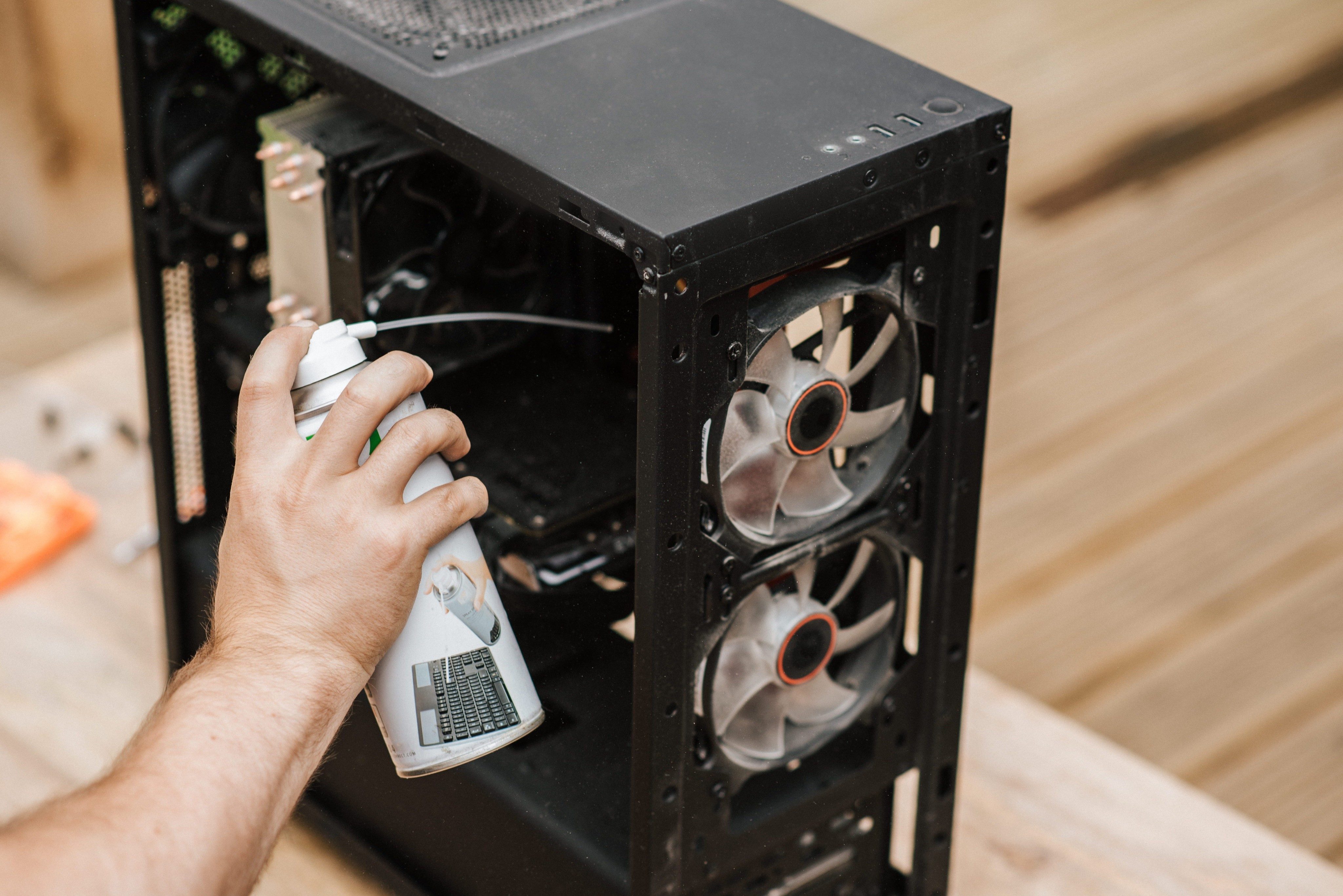WE
We are helping you tackle a technology to-do list that will help you be more productive, organised and secure in 2022.
This time we cover off cleaning your computer and answer just how often you should do it.
How Do You Maintain a Healthy Computer?
Heat is your computer's worst enemy. Not only do we have to combat Australia's tropical climate with air conditioning, over time dust
builds up inside your computer which can then undermine its cooling efficiency, resulting in shorter life spans for your computer's
components not to mention the build up of bacteria, mold, and dust cause everything from allergies to asthma regular cleaning of
computer will significantly lower the potential for sickness.
How Often Should You Clean Your PC?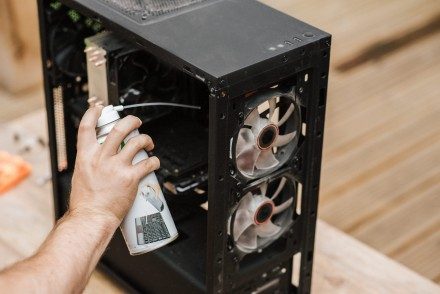
To keep your PC clean, sanitary, and running smoothly, give each component a cleaning on a regular basis.
It’s a good practice to open up your computer and follow the cleaning process at least every three to six months. If you notice that your system has a significant level of dust and hair present the first time you clean it, more frequent cleaning is in order.
Cleaning the Inside of Your Computer
Fans or filters that look like this are a sure bet that your computer needs some serious attention:
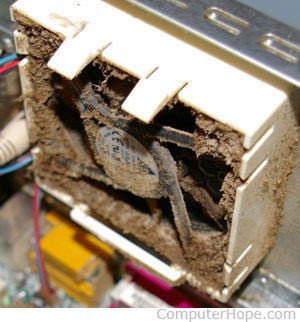
It’s a safe bet that if the fan looks like this (or worse), the inside is just as bad. This can affect system performance and will shorten the life of your components. A little time and attention will keep your system running cooler and more efficiently.
Deep-cleaning your system
To give your computer a thorough cleaning, first, turn off and unplug the system, and disconnect such peripherals as monitors, keyboards, and others.
Next, open the computer’s case.
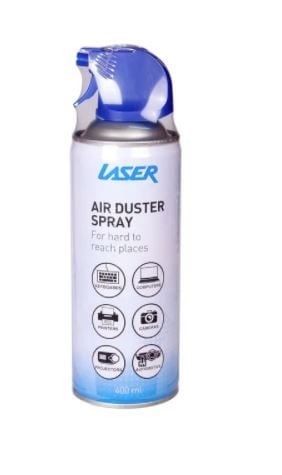
Your most useful tool will be a can of compressed air, to dislodge dust on your fans and other internal components. Electronics generate heat, which is a natural attraction for dust and hair that make their way into your system.
Move your computer to a well-ventilated area, as you may be stirring up a significant amount of dust.
Using the compressed air, a squeeze bulb, or a soft brush remove dust from the most contaminated surfaces first – likely the computer case, CPU, and graphics card fans. To get the fan blades cleanest, keep the blades stationary while blowing by carefully inserting a pencil or thin screwdriver between the blades.
Repeat use of the compressed air in RAM slots, around the CPU, around heat sinks, and throughout the case interior.
You should not utilize a standard vacuum to remove dust from your computer, especially the interior. Plastic nozzles on household vacuums tend to build up static, and a static discharge against your CPU or other sensitive electronics could severely damage your system.
There have been some computer users who suggest taking your system outside and blowing it out with a leaf blower, but that seems a bit extreme (although it may actually be effective).
Once you have the dust and other toxic elements removed from your system, close the case, reconnect the power and peripherals, and your system should be running cleaner, cooler, and possibly even faster.
Cleaning a Keyboard
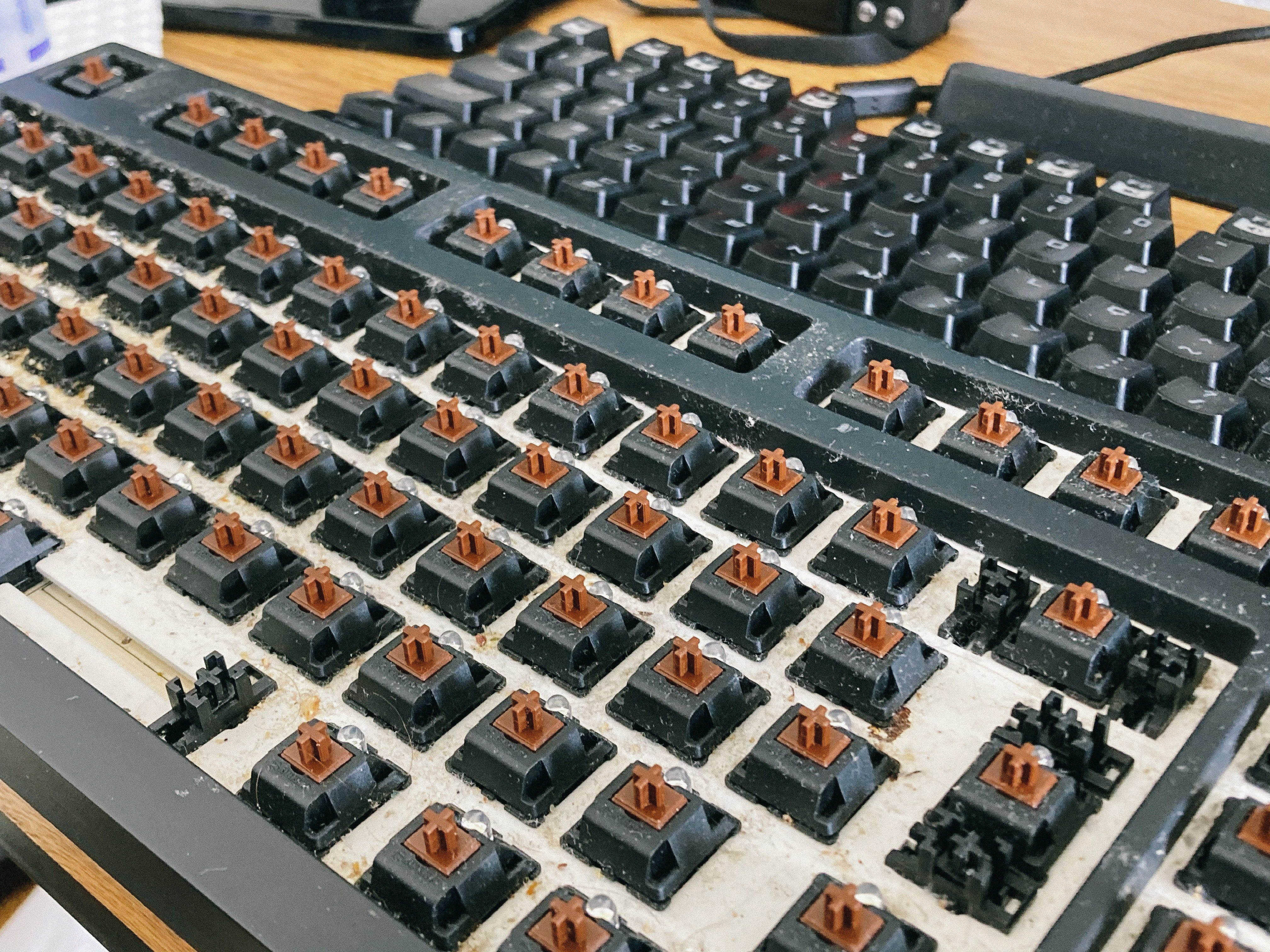
Even if it doesn’t look like it, your keyboard can get really dirty. A lot of things can end up being under the keys – ultimately damaging the keys. There can be a lot of different objects that can build up on and under a keyboard:
- Germs (especially important for shared computers)
- Body oils
- Dust
- Snacks and crumbs
- Spills
Some keyboards on the market are constructed and sold as being dishwasher safe. If yours is in that category, take advantage and toss it in the dishwasher periodically to clean and sanitise it (make sure to follow manufacturer instructions first).
Most keyboards are not so easily cleaned, and require regular attention to keep them sanitary, working properly, and – well – not gross.
Cleaning your keyboard is not difficult, although spills of coffee and sugary drinks may be the exception.
What you need:
- compressed air
- microfiber cloth
- isopropyl alcohol
- cotton swabs
For spills, you may also need a small slotted screwdriver or thin blade, to remove key caps.
How to clean the keyboard
Your first step is to unplug the keyboard from your computer or turn off your computer if working with a laptop or wireless keyboard.
Next, turn the keyboard upside down, and give it a few solid shakes (if your computer is a laptop, shake gently). This should remove larger particles or crumbs that may be present.
Use the compressed air to blow stubborn debris from between the keys, keeping the nozzle at least ½” from the keys. Spray from different
angles to free all the particles you can dislodge easily. Once you’ve sprayed the keys, repeat the shaking process with the keyboard turned
over.
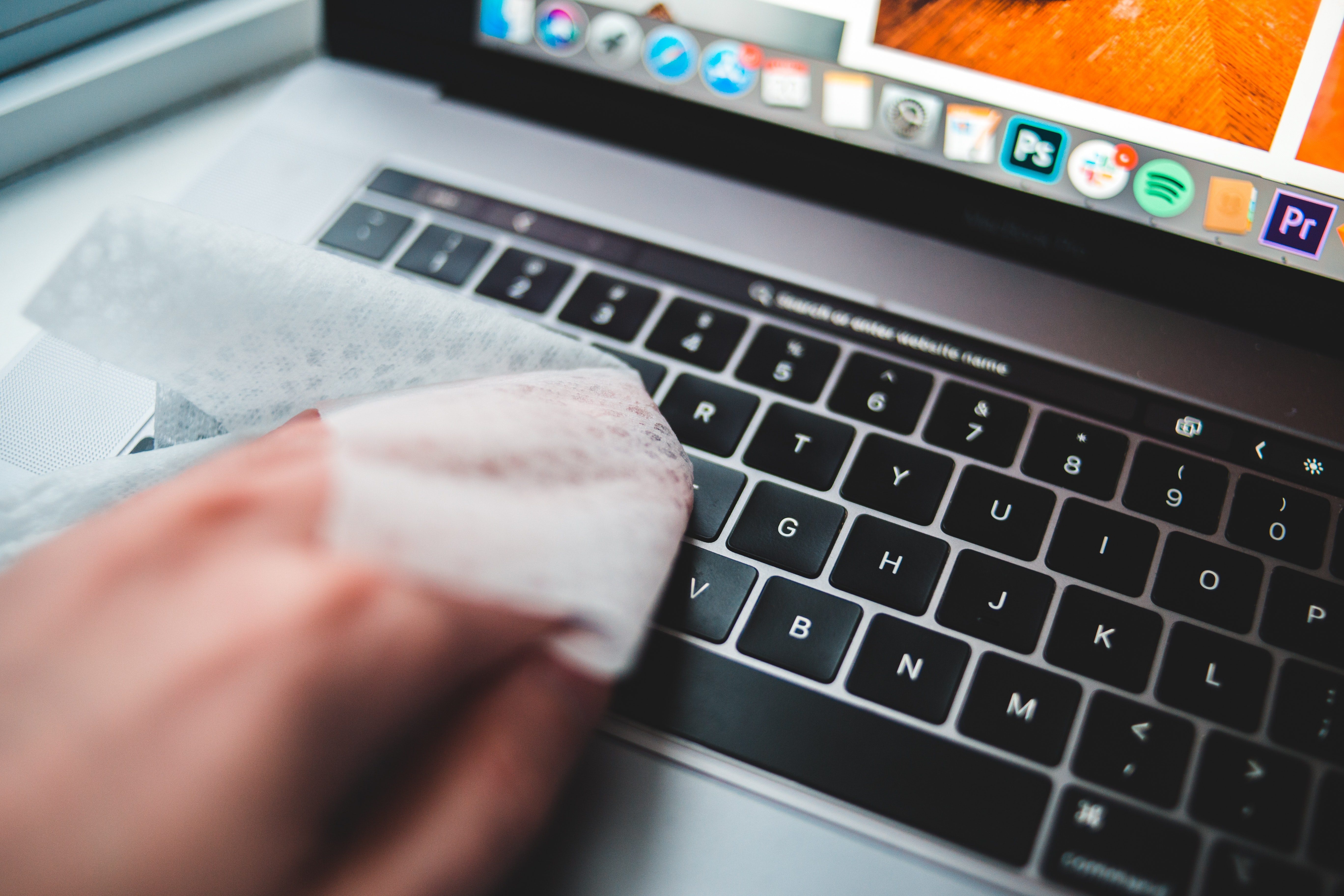
If there are still dust or other contaminants present, a brush or small vacuum with a brush tip will help clean them from the keyboard.
If your keys have considerable build-up that requires more thorough cleaning, use cotton swabs dampened (not soaked) with isopropyl alcohol to clean around each key.
For a deep clean of a mechanical keyboard, remove key caps by gently prying them up with a small screwdriver or thin blade (Pro
Tip: take a picture of the keyboard first, so that you know where the keys go). Soak them in a mixture of water and a mild detergent
such as dish soap. You can then wipe them clean with a cloth, and lay them out to air dry. Be certain they are completely dry before
pushing each key gently back in place.
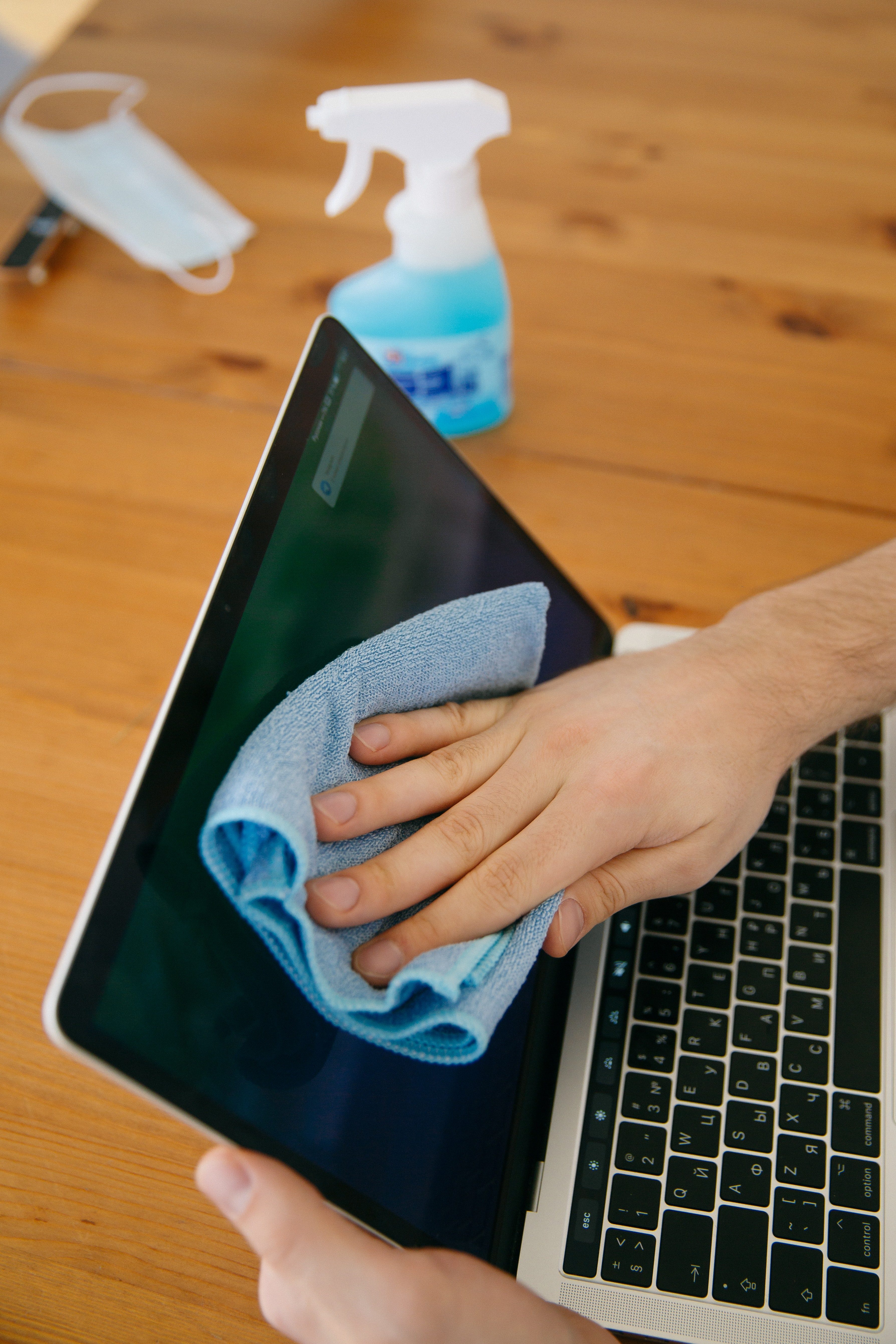
How to clean your monitor
Today’s LCD screens, whether desktop monitor or laptop screen, require special cleaning consideration. While their resolution has improved significantly over the glass monitors of years past, they are delicate electronic devices that must be cleaned with care.
First, be sure NOT to use abrasive cloths such as paper towels to do the job. They can do more damage than good. Also never use alcohol or ammonia-based solutions to clean your monitor or LCD television.
To clean your monitor or laptop screen:
First, turn off your laptop computer and unplug your monitor from the computer.
Using a soft clean cloth, lightly brush the screen from side to side, top to bottom. Avoid circular, swirling motions. A clean microfiber cloth is the best choice for giving your screen a good dusting and removing such distractions as smudges or fingerprints.
For more stubborn grime, make a solution of soap and a very small amount of mild detergent such as dish soap. Lightly dampen your microfiber cloth and wipe the screen gently, avoiding dripping or saturating the screen. Be certain the screen is thoroughly dry before restarting the monitor or laptop.
